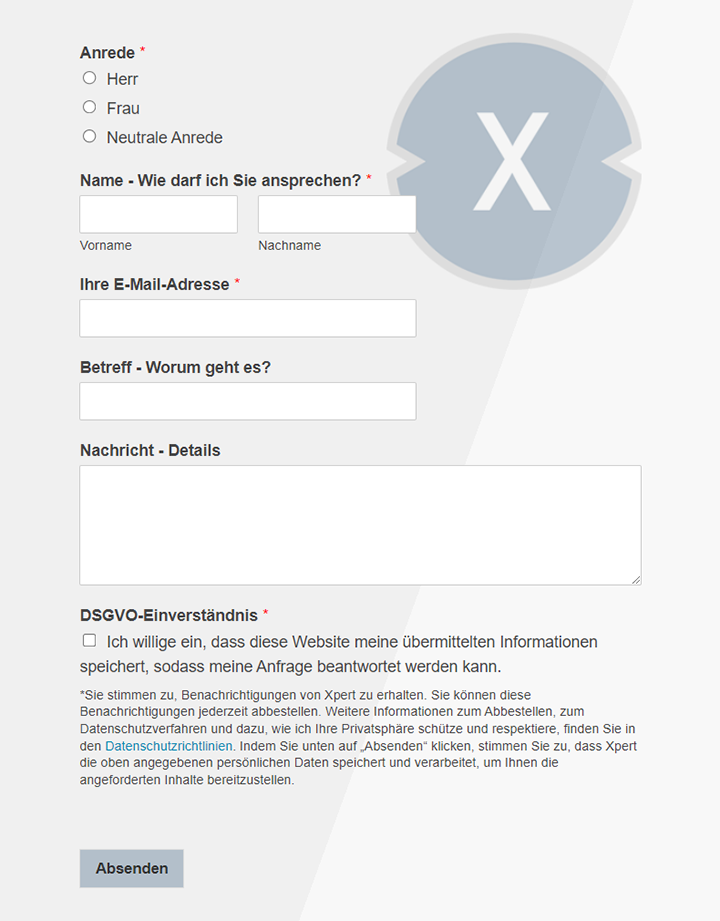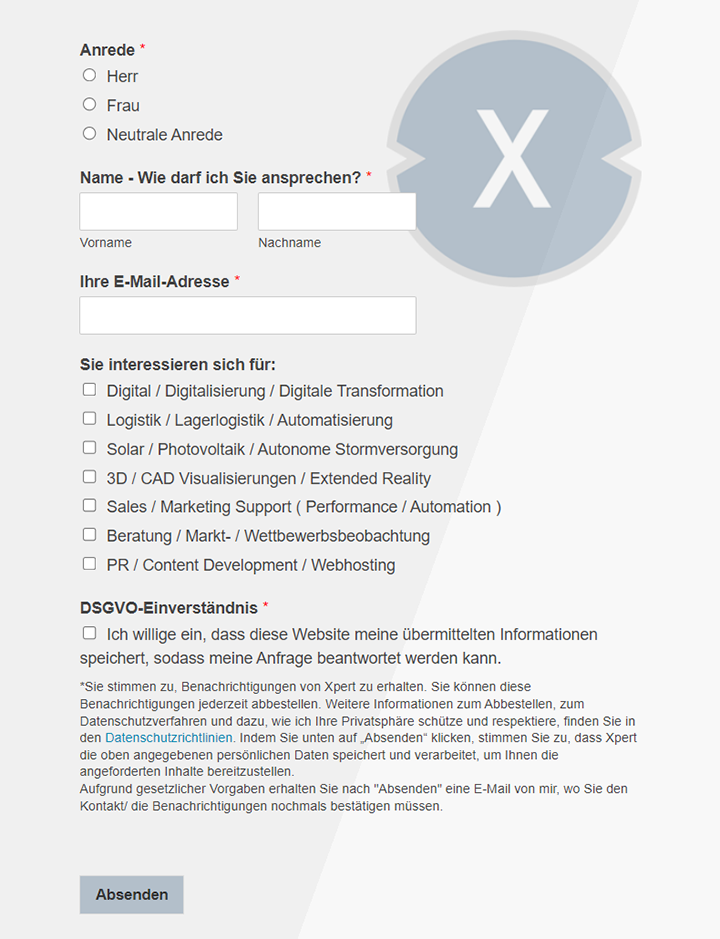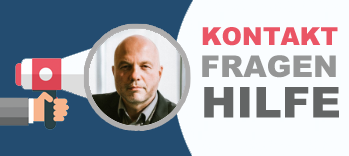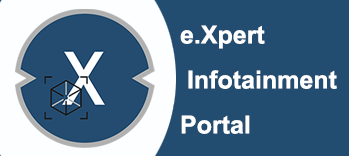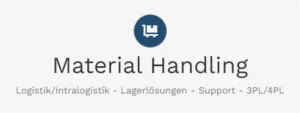The central role of the national language in search engine optimization (SEO) using the example of Hangul in South Korea
Xpert pre-release
Language selection 📢
Published on: February 22, 2025 / update from: February 22, 2025 - Author: Konrad Wolfenstein

The central role of the national language in search engine optimization using the example of Hangul in South Korea - Image: Xpert.digital
SEO success in South Korea: Why Hangul is the key
The future of SEO in South Korea: Artificial Intelligence and Hangul
In the dynamic and state -of -the -art digital landscape in South Korea, a unique constellation manifests itself: The Naver search engine dominates the market to a dimensions that is unusual in western industrialized nations, and the Korean language, written in Hangul, shapes digital communication and information search in an unmistakable way. The mastery of Hangul is not only a linguistic necessity for companies that want to be successful in this market, but also a fundamental strategic advantage in search engine optimization (SEO). Hangul is much more than just a writing system; It is a key to understanding the Korean culture, the way of thinking of the Korean users and the specific functioning of the Korean search algorithms, in particular from Naver.
This comprehensive report illuminates the complex meaning of Hangul in the context of search engine optimization in South Korea. We will examine the linguistic peculiarities of Hangul and show how they shape the country's SEO architecture. We will analyze the algorithmic requirements of the Korean search engines, especially compared to western search engines such as Google, and develop detailed strategies for keyword optimization in Hangul. In addition, we will discuss the technical aspects of implementing Hangul in websites and digital content, emphasize the importance of cultural localization beyond pure translation and show the specific challenges for international companies on the Korean market. Finally, we take a look into the future of the Hangul SEO, especially with regard to artificial intelligence and the changing search habits of the Korean users.
Suitable for:
Linguistic foundations: Hangul as the foundation of the Korean SEO architecture
Hangul, the Korean alphabet, is much more than a mere tool for written communication. It is a profound cultural and technical foundation that has a significant impact on the way information in South Korea is found, found and consumed. The emergence of Hangul in 1446 under the aegis of King Sejong The Great was a revolutionary act that fundamentally changed the Korean script landscape. Before Hangul, Hanja was used in Korea, Chinese characters, which were inadequate for the Korean language with their completely different grammar and phonology and were also only dominated by a privileged upper class. Hangul, on the other hand, has been designed as a lettering system that is easy to learn and use and that the Korean language can accurately reproduce in all its complexity and wealth of nuances.
Hangul is an alphabetical system, but it is fundamentally different from alphabetical systems such as the Latin alphabet. It is a feature alphabet, which means that the form of the letters reflects the articulation organs and the type of sound formation. It consists of 19 consonants and 21 vowels that are combined with syllable blocks. These syllable blocks are the characteristic appearance of hangul and contribute to the visual identity of Korean script. The scientific and systematic structure of Hangul is often praised because it is considered one of the most efficient and logical writing systems in the world.
This linguistic independence of Hangul has profound consequences for search engine optimization in South Korea.
Semantic depth and precision:
In contrast to romanized transcripts or direct translations from English, which often lose semantic nuances and cultural connotations, Hangul enables the search intentions of the Korean users precisely. Each individual syllable block (Jamo) in Hangul can bear an independent meaning or be combined with more complex words and phrases that reflect specific search intentions very precisely. This is particularly important in a market in which users formulate very precise search queries and expect relevant, high -quality results.
Morphological flexibility and keyword variety:
Hangul enables the formation of extremely long and content -rich keywords that would be unusual in western languages. By combining different words, endings and particles, Korean users can formulate very detailed search queries, such as " 최신스마트폰추천 " (recommendations for the latest smartphones) or " 서울강남역맛집데이트코스 " (restaurant date course in Gangnam Station, SEoul). This morphological flexibility requires SEO experts to understand a deep understanding of Korean grammar and the way in which Korean users formulate search queries. It is not just about identifying individual keywords, but also about understanding and optimizing complex keyword phrases that reflect the actual search intentions of the users.
Algorithmic processing of Korean keywords through naver:
Naver, the dominant search engine in South Korea, has developed an algorithm that is specially tailored to the Korean language and the search habits of the Korean users. While Google usually relies on word -based tokenization and advanced models such as Bert (Bidirectional Encoder Representations from Transformers) in order to understand search queries, Naver follows a different approach that takes into account the special features of Hangul and the Korean language.
Morphem -based tokenization:
In contrast to Google, naver search phrases are not broken into individual words, but into smaller morphemes. Morphemes are the smallest meaningful units of a language. In Korean, morphemes can be vocal trunks, prefixes, suffixes, endings or particles. By analyzing search queries at morpheme level, Naver can better understand the contextual relationships between the individual drawing blocks and grasp the search intention of the user more precisely. This morphemal -analytical approach is particularly important in the Korean, since the language is rich in particles and endings that can change the meaning of a word or a phrase.
Homonym resolution and understanding of context:
Another important feature of the Korean language is the existence of many homonyms, especially due to the influence of the Chinese characters ( Hanja ). Many words based on Hanja sound identical, but can have different meanings. For example, the word " 방 " ( bang ) depending on the context "room", "direction", "method" or "protection" can mean. In order to dissolve homonyms and determine the correct meaning of a search term, both naver and Google Korea analyze the context in which the word is used. They take into account the surrounding words, the thematic context of the search query and the user behavior in order to determine the most likely search intention and provide relevant results. For SEO experts, this means that the keyword optimization in Korean must not only be limited to individual keywords, but must also take into account the context and semantic relationships between keywords.
Strategic keyword optimization in Hangul:
The dominance of Naver in the Korean search engine market requires specialized tools and methods for keyword research and optimization. While some western SEO tools can also be used for the Korean market, it is essential to familiarize yourself with the specific tools and resources that Naver offers themselves and that are tailored to the Korean language and the Korean search habits.
Never Keyword Tool:
The Naver Keyword Tool is an indispensable tool for every SEO expert who focuses on the Korean market. It provides valuable insights into the search volume of different keywords, seasonal trends and associative search phrases. The tool enables the popularity of keywords to analyze over various periods and to discover related keywords that could be relevant for their own SEO strategy. The function of uncovering connections between general keywords and regional dialect variants is particularly useful. For example, it can be said that the search for " 겨울옷 부산 겨울코트correlates with specific dialect variants such as " These regional differences can be of great importance for local SEO optimization.
Semrush and similar tools for the Korean market:
Western SEO tools such as Semrush, Ahrefs or MOZ are increasingly offering functions for the Korean market. You can help identify competing keywords, the analysis of backlinks and monitoring rankings. However, these tools often have limits when recording cultural connotations and the nuances of the Korean language. You can identify keywords in Romanization and Hangul, but you may not always record the subtle differences in meaning and cultural implications that are relevant for the Korean search intention. Therefore, these tools should be regarded as a supplement to the native Korean tools and not as a complete replacement.
KakaoKeyword Planner:
Kakao, another Korean technology company, which is primarily known for its messaging app Kakaotalk, also offers a keyword planner, which is particularly effective for long-tail keywords with a local cover. The Kocao Keyword Planner can help identify specific search phrases used by users in certain regions or districts. For example, you could search for keywords like " 서울 홍대 카페 투어 " (Café tour in Hongdae, SEoul) to address users who are looking for local experiences and recommendations. This focus on local keywords is particularly important in South Korea, since Korean users often search for very location and prefer local information and recommendations.
Cultural semantics in the keyword selection:
The successful keyword optimization in Hangul not only requires linguistic competence, but also a deep understanding of the Korean culture and the way in which cultural values and norms influence the search intentions and the search behavior of the Korean users. The mere translation of keywords from English or other languages into Korean is often not sufficient to achieve the desired response from the Korean target group. It is important to use culturally adapted keywords that reflect the Korean mindset and the Korean needs.
" 맛집 " Instead of "restaurant":
A classic example of culturally adapted keywords is the use of " 맛집 " "(Matjib) instead of" 레스토랑 "( reseutorang , the Korean transcription of" restaurant "). " 맛집 " Literally means "flavor" or "place with a good taste" and emphasizes the culinary experience and the quality of the food, while " 레스토랑 " is more of a neutral and functional concept for a restaurant. Korean users who are looking for restaurants use " 맛집 " more often because they are not only looking for a place to eat, but also a positive and tasteful experience. The use of " 맛집 " in keyword optimization signals the Korean users that they understand their cultural preferences and offer them relevant and appealing content.
" 혜택 " (Advantages) in e-commerce:
In the e-commerce area, the keyword " 혜택 " ( hyetaek ), which means "advantages" or "discounts", is of great importance. In the Korean purchase culture, which is strongly characterized by group orientation and the striving for "cheap offers", discount systems, special offers and additional services play a crucial role. Korean users often actively search for " 혜택 " in connection with products or services, since they value a good price-performance ratio and additional advantages. The integration of " 혜택 " into the keyword strategy, especially in the e-commerce area, can significantly improve visibility and the click rates.
Technical implementation: From the coding to mobile performance:
The technical implementation of Hangul in websites and digital content is another crucial aspect of the Korean SEO. Correct technical implementation not only ensures the correct display of hangul signs, but also contributes to optimal performance and user experience, especially on mobile devices that represent the primary medium for internet access in South Korea.
UTF-8 coding:
The correct coding of websites and digital content is essential in order to correctly present hangular signs and to avoid distortions or representation errors. UTF-8 (Unicode Transformation Format-8-bit) is the recommended coding for Hangul and most modern writing systems. Older codes such as Euc-KR (Extended Unix Code-Korean) can lead to problems with the display of hangules, especially in combination with other writing systems or in modern browsers and operating systems. The use of UTF-8 as a standard coding for all websites and digital content that aims at the Korean market is therefore essential.
Structured data and schema-markup for naver:
Both Naver and Google support structured data and schema-markup to provide search engines additional information about the content of a website and to improve the display in the search results. However, there are differences in the specific schema types and attributes that are preferred by Naver and Google. For the Korean market, it is important to familiarize yourself with the specific requirements of Naver and to adapt the Schema Markup accordingly. For example, Naver requires specific schema markup for Korean entities such as " 업체 " ( eopche ), which means "company" or "company". The correct use of structured data and schema-markup for naver can improve visibility in the search results, generate Rich snippets and increase the click rates.
Mobile First optimization for the Korean market:
South Korea is one of the countries with the highest mobile Internet use worldwide. Over 94 % of Korean Internet users access the Internet via mobile devices. Therefore, consistent mobile-first optimization is of crucial importance for the Korean market. This means that websites and digital content have to be developed and optimized primarily for mobile devices and only secondly for desktop computers.
Loading times under 3 seconds:
Fast loading times are a critical factor for mobile user experience and also for ranking in search engines. Naver's Crawler prioritize websites that quickly load and offer good mobile performance. Ideally, websites for mobile devices should load in less than 3 seconds. To achieve this, various measures are required, such as compression of images and other resources, the minimization of code, the use of caching and the use of a content delivery Networks (CDN). The implementation of accelerated mobile pages (AMP) standards or the use of native mobile-first designs can also help optimize loading times and improve mobile performance.
Hangul typography and fonts:
The correct representation of hangul typography on mobile devices is another important aspect of technical implementation. Fonts such as "Noto Sans Kr", an open source font that was specially developed for Hangul, should be used to ensure a consistent and readable presentation on all devices. It is important to ensure that the fonts used are correctly rendered and do not cause layout shifts or display errors, especially on mobile devices with different screen sizes and resolutions.
Cultural localization: more than just translation:
The cultural localization goes far beyond the pure translation of texts. It includes adapting content to the cultural values, norms, preferences and communication styles of the Korean target group. A successful cultural localization takes into account the subtle nuances of the Korean language, the tone, the courtesy, the cultural references and the symbolism.
Tonfall and politeness levels in the Korean language:
The Korean language is strongly shaped by politeness levels. There are different grammatical and lexical means to express different degrees of courtesy and formality. The choice of the right tone and the right polite level is crucial for the acceptance and credibility of content in Korea.
Formal salutation ( 존댓말, jondaenmal ):
The formal salutation is mandatory in many contexts in Korea, especially in B2B communication, in content on sensitive topics such as medicine or finance and in communication with older or high-ranking people. The use of the formal salutation signals respect and professionalism and is a sign of good education and cultural sensitivity.
Informal tonality ( 반말, banmal ):
The informal tonality is acceptable in certain contexts, especially in content that is aimed at young target groups, in pop culture or on social media. However, the use of informal tonality without a deep understanding of Korean culture and context is risky. A false or inappropriate use of the informal salutation can be perceived as rude, disrespectful or even insulting and significantly impair the credibility and acceptance of content. It is therefore advisable to work closely with native editors and language experts in the cultural localization of content for the Korean market in order to ensure the right tone and the reasonable courtesy level.
Cultural references and symbolism:
Korean culture is rich in specific references, symbols and cultural codes that play an important role in communication. Knowing and taking into account this cultural references and symbolism can significantly increase the relevance and attraction of content for the Korean target group.
Color symbolism:
Colors often have deep symbolic meanings in Korean culture. For example, white is traditionally associated with grief and purity, while red symbolizes happiness, joy and positive energy. The wrong or inappropriate use of colors in images, call-to-actions or web design can lead to negative associations and impair the perception and ranking of content. It is important to understand the Korean symbolism and to take into account when designing visual content and web designs.
Pop culture integration:
The Korean pop culture (K-pop, K-dramas, K-beauty, etc.) is extremely popular worldwide and has an enormous impact on Korean society, especially on young generations. The integration of pop culture references into content can increase the attention and commitment of the Korean target group. For example, keywords such as " BTS 추천 " (BTS recommendations) or " 블랙핑크 스타일 " (Blackpink style) can generate significantly higher click rates in young demographies than generic keywords. The use of pop culture trends and references in the SEO strategy can be an effective method to increase the relevance and attractiveness of content for the Korean target group.
Challenges for international companies:
International companies that want to enter the Korean market faces specific challenges in the field of Hangul SEO and cultural localization. These challenges range from linguistic and cultural misunderstandings to legal and regulatory hurdles.
Translation traps and cultural misunderstandings:
The translation of content from English or other languages into the Korean carries considerable risks, especially if you rely on purely mechanical translation tools. Robotic translations often fail due to the subtle nuances of the Korean language, especially due to the correct reproduction of particles such as " -는 " ( neun ) or "- 을 " ( eul ), which can significantly modulate the search intentions and the meaning of sentences. Cultural connotations, idiomatic expressions and subtle humor forms are often lost in machine translations or are misinterpreted.
Hanja hybrid and credibility:
About 60 % of the Korean vocabulary have Chinese roots ( Hanja ). Many Korean words can be written in both Hangul and Hanja. The correct use of Hanja can increase the formal and intellectual appearance of texts, while the exclusive use of Hangul is often perceived as a modern and accessible. However, false or inappropriate integration of Hanja in Korean content can significantly impair the trustworthiness and credibility of a company or a brand. For example, the wrong use of Hanja for the word "love" (e.g. " 愛 " instead of " 사랑 ") can be perceived as uneducated or even incompetent. International companies should therefore pay attention to the correct use of Hanja in the creation of Korean content and, if in doubt, rely on the exclusive use of hangul or consult professional translators and lecturers with a Korean mother tongue.
Legal and regulatory hurdles:
The Korean market is characterized by specific legal and regulatory framework that international companies must observe in digital presence and data use.
Data protection laws (PIPA):
South Korea has strict data protection laws, in particular the Personal Information Protection Act (PIPA), which regulates the storage and processing of personal data of Korean users. The storage of Hangul user data, such as search queries, user profiles or transaction data, usually requires local serverhosting in South Korea or compliance with strict data protection guidelines and procedures. International companies have to familiarize themselves with the Korean data protection laws and ensure that their data acquisition and processing practices comply with the Korean regulations.
Niver Business Registration:
A Korean business license is usually required for companies that want to be listed in Naver Place, the local industry directory of NAVER. Foreign companies without a branch or a subsidiary in Korea may have difficulty registering in Naver Place and increasing their local visibility. The Naver Business Registration can be a significant hurdle for international companies, especially for small and medium -sized companies that have no physical presence in Korea.
Future perspectives: AI and the Evolution of Hangul-Seo:
Search engine optimization in Hangul is a dynamic field that is constantly evolving, especially with regard to the progress in artificial intelligence (AI) and the changing search habits of the Korean users. AI-based technologies will significantly influence the Hangul SEO in the future and create new opportunities and challenges for companies.
NLP and semantic search:
NVER relies to Natural Language Processing (NLP) and transformer-based models to better understand search queries and to deliver more relevant results. These AI models make it possible to go beyond pure keyword matching and to analyze the semantic meaning and the context of search queries.
Integration of dialect variants:
Never works to integrate dialect variants of the Korean language, such as Busan-Satoori, into the Intent recognition. This enables the search engine to also understand search queries that are formulated in regional dialects and to deliver more relevant local results.
Visual Hangul elements in pictures and videos:
Future AI models could be able to indicate and analyze visual hangul elements in pictures and videos. For example, fonts in images or video scenes, such as in K-Drama scenes, could be recognized and used for semantic analysis and ranking of content.
Voice search optimization:
The use of Voice Search is also increasing in South Korea. By 2025, over 40 % of the search queries in Korea will be expected by language search. The optimization for Voice Search requires an adaptation of the keyword strategy and content creation. Keywords must be formulated more natural and conversation-oriented in order to meet the typical language patterns of Voice Search inquiries. For example, a voice search request could be: " 홍대 근처 맛집 어디 있어요 ?" ( Hongdae geuncheo matjib eodi isseoyo ?), What "Where can you have good restaurants near Hongdae?" means. SEO experts also have to take into account regional pronunciation variants and accents in order to optimally optimally optimize Voice Search content.
Hangul-SEO as the basis of every successful digital strategy in South Korea:
The use of Hangul in the SEO process in South Korea is not an optional addition or a mere technical aspect, but the fundamental basis of every successful digital strategy in this highly dynamic and culturally unique market. While technical factors such as mobile-first optimization, correct coding and fast loading times are indispensable, ultimately the cultural depth, linguistic precision and the relevance of the content in Hangul decides on the long-term ranking success and sustainable customer loyalty.
International companies that want to be successful in South Korea must not only understand Hangul as a writing system, but as a complex cultural resonance room. It is about not only speaking the Korean language, but also to understand, feel and use culturally appropriately. This challenge can only be mastered through close cooperation with native -language experts, continuous cultural education and a constant adaptation to the developing algorithms of Naver and the search habits of the Korean users. Only those who really understand Hangul and Korean culture can be sustainable in the Korean digital landscape.
Our recommendation: 🌍 Limitless reach 🔗 Networked 🌐 Multilingual 💪 Strong sales: 💡 Authentic with strategy 🚀 Innovation meets 🧠 Intuition
At a time when a company's digital presence determines its success, the challenge is how to make this presence authentic, individual and far-reaching. Xpert.Digital offers an innovative solution that positions itself as an intersection between an industry hub, a blog and a brand ambassador. It combines the advantages of communication and sales channels in a single platform and enables publication in 18 different languages. The cooperation with partner portals and the possibility of publishing articles on Google News and a press distribution list with around 8,000 journalists and readers maximize the reach and visibility of the content. This represents an essential factor in external sales & marketing (SMarketing).
More about it here:
We are there for you - advice - planning - implementation - project management
☑️ SME support in strategy, consulting, planning and implementation
☑️ Creation or realignment of the digital strategy and digitalization
☑️ Expansion and optimization of international sales processes
☑️ Global & Digital B2B trading platforms
☑️ Pioneer Business Development
I would be happy to serve as your personal advisor.
You can contact me by filling out the contact form below or simply call me on +49 89 89 674 804 (Munich) .
I'm looking forward to our joint project.
Xpert.Digital - Konrad Wolfenstein
Xpert.Digital is a hub for industry with a focus on digitalization, mechanical engineering, logistics/intralogistics and photovoltaics.
With our 360° business development solution, we support well-known companies from new business to after sales.
Market intelligence, smarketing, marketing automation, content development, PR, mail campaigns, personalized social media and lead nurturing are part of our digital tools.
You can find out more at: www.xpert.digital - www.xpert.solar - www.xpert.plus





